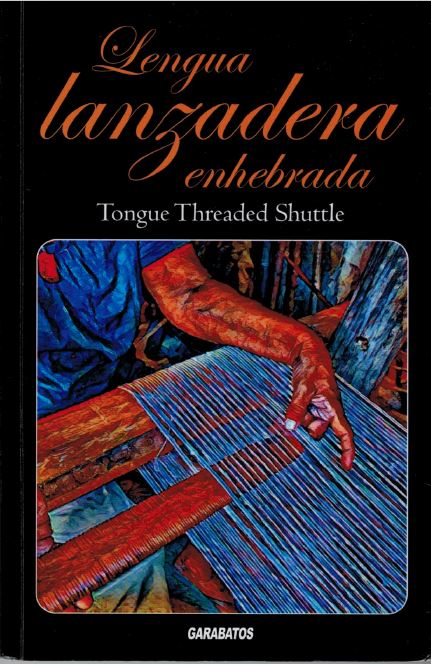A Reckoning With War
Review by Michael Foldes
Managing Editor
The fabric of society is comprised of countless threads leading to major events that shape the lives of virtually every living thing. Think String Theory. Lilvia does… You don’t have to think just in terms of humans for this to be true; scores of species in dozens of countries are on endangered lists – because of what humans do. Coal mines, cars and steel mills, much as their products may be needed, contribute to global warming and rising waters that threaten remote island nations – not to mention coastal areas around the globe. Nuclear power, once believed to be a panacea for a “clean” energy future, met its match in Mother Nature, who is wont to give catastrophic visitations when, where and how she likes.
And then there’s the matter of War, the Nature of Man the Beast, who continues to sidestep Peace, empathy and understanding with the agility of a butterfly, in favor of acting out as if one were the center of the universe.
So it was with some interest that I opened and read Lilvia Soto’s Lengua lanzader enhebrada, which she began on the occasion of the Iraq War, and continued to completion through multiple circles of hell. The original poem was written in English. Her subsequent translation into Spanish, she writes in her introduction, diverges from the English original “to take on a life of its own.” Both versions are included in this volume, so one can read in English, Spanish, or both, and make up his/her mind about what resonates most, and in which language. The allegories run long, integrating multiple myths from Greek and Latin to less-widely known North and South American indigenous populations.
Soto creates in a narrative style that runs prose-like, then transforms into a poetic scripture more like what one might expect of poetry than the lists of events, faults, features, characterizations, and so forth, that set the stage for what is to come. In 13 sections, she proceeds to identify, and then examine, the natures of each of 13 types she endows with Latin names, as if they are family, genera or species:
Homo narrans, Homo faber, Homo celebrans, Homo ludens, Homo intertextus, Homo labyrintheus, Homo narrans, Homo bellicus, Homo sciens, Homo digitalis, Homo imperialis, Homo religiosus, Homo amans.
In Section one, Homo narrans, Athena punishes an arrogant girl who unwaveringly weaves a beautiful but dissenting tale of the Olympian gods, by turning her into a spider. In Homo faber, Soto identifies male and female societal roles by what they weave and make.
and, sometimes, the tent itself.
Homo celebrans retells the Greco-Roman tale of Penelope, who when Calypso detained Odysseus spent her days weaving, and nights pulling apart the cloth, to deny her greedy suitors the opportunity to take her hand in marriage.
Homo ludens takes from a book by Dutch cultural theorist Johan Huizinga who emphasized the value of play in society. Taking this concept beyond the element of play itself, Soto dances with language, eventually to send Icarus falling into her front yard, and while the tragedy plays out around him, Lorca’s guitarist strums as Soto quotes the final lines in his epic poem:
“The weeping of the guitar
begins.
The goblets of dawn
are smashed.
The weeping of the guitar
begins.
Useless
to silence it.
Impossible
to silence it.
It weeps monotonously
as water weeps
as the wind weeps
over snowfields.
Impossible
to silence it.
It weeps for distant
things.
Hot southern sands
yearning for white camellias.
Weeps arrow without target
evening without morning
and the first dead bird
on the branch.
Oh, guitar!
Heart mortally wounded
by five swords.”
In Homo intertextus, perhaps the darkest of these poems, Soto ascribes man’s inhumanity to man to the separation and loss from an umbilical connection that when cut both pulls and pushes, creating a rip current of ferocity that effaces a better nature. Inadequacy compensated for by lust for power and control comes out as:
and no other man will want her.”
The politics of war have their place here, from Operation Condor, when “soldiers, generals, and police chiefs/in Chile and Argentina,/Urugua and Paraguay,/Brazil, Bolivia, Peru, and Ecuador,/with the blessings of Nixon, Kissinger, and the C.I.A.,/sent thousands of leftist dissidents/sky diving/in the Atlantic, in the Pacific, in Rio de la Plata,/without parachutes.” The litany continues with references to Operation Telarana in Mexico, to Vietnam, to the Battle of Algiers.
Homo labyrinthus explores love and betrayal, jealousy and suspicion, and ample punishments thereof, in the Minotaur and gods whose deeds gave rise to it.
Homo narrans, again, in chapter 7, sets the stage in a retelling of Greek myths as aperitifs, reminders of other defiant times and what’s to come:
Soto sees the khipu knots as bearing witness to colonial and post-colonial crimes in the Americas, as the ancients wove tales into fabric, “for to explore the fullness of our time,/we must string, sing, dance,/words of witness, rage, gratitude,/we must tell each other/the stories of our revulsions,/of our hopes.”
Homo sapiens questions whether violence is woven into human DNA, whether in those strands of nucleotides the driving forces that connect and/or divide us. She disallows the ingenuous remarks of George W. Bush, that he “cannot understand poor people.”
How do I understand?
This long, at times prosaic, poem seeks to unwind strands of DNA to discover whether genetic code runs from father to son, ruling class to ruling class:
The Sun King and his grandson?
Homo sciens speaks to study and discovery of the nature of the universe and its components, exploring whether and how they tie together, whether what unites them or describes them are vibrations. [1] Describing these “vibrations” in simpler terms, she writes, “Pluck the strings of the first petty dictator in history,/pluck the strings of today’s grandiose emperor,/and you get the same hollow tone…/”
Homo digitalis moves to the modern implementation of 1s and zeros to explain the contemporary means of communication and understanding. “The electronic web that connects/computers, ussers,/sounds, images, texts,/in all languages and fields of knowledge/has been called the Aleph,/the point that contains all the places of the world/seen from all angles/without superposition or transparency,/the sphere without a circumference/whose center is everywhere.” A no more beautiful or fitting description of what we might find in life or an afterlife that unites us with the universe (unless we’re already there), as that center moves from one place to another while always remaining the same — at the center.
Homo imperialis grasps that Center, but does not understand or acknowledge others also possess the power, among them Atropos, “who will not be intimidated.”
Homo religiosus explores North American indigenous beliefs and belief systems that provide followers understanding and wisdom, and sometimes comfort, in the face of uncertainty. Homo amans, the final section in the book, continues on with the lessons of Homo religiosus in a poem that paints a portrait of what life might be like if mankind were to adopt the immortal characteristics of which he is capable, including empathy, love, understanding and forgiveness. Admonishments from earlier sections virtually disappear, as the final ‘chapters’ overtake dark histories and give way multiple forms of remembrance that provide potential to close the “circle of hate” that ensnares us.
Thirteen facets in a declension of Humanity that reflects anger, sorrow, hope and very nearly resignation with the realization that while things may change, they almost certainly will not. At least not as long as it’s in our DNA.
[1] According to the theory, the fundamental constituents of reality are strings of the Planck length (about 10−33 cm) that vibrate at resonant frequencies. Every string, in theory, has a unique resonance, or harmonic. Wikipedia
About the author:
 Mike Foldes is founder and managing editor of Ragazine.CC. You can read more about him in About Us.
Mike Foldes is founder and managing editor of Ragazine.CC. You can read more about him in About Us.

Recent Comments